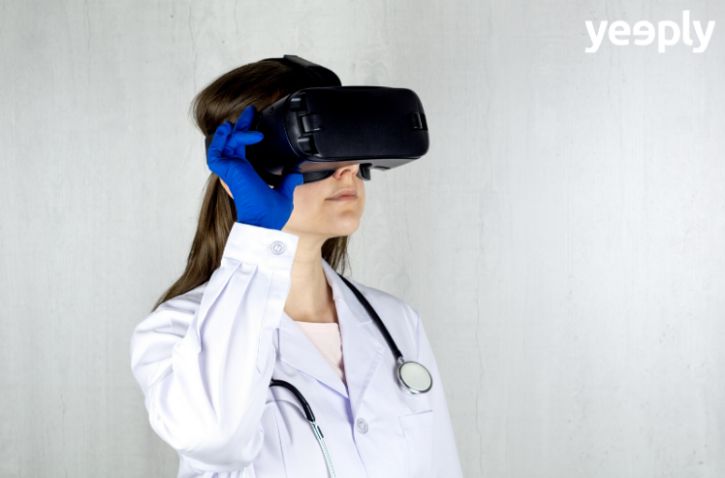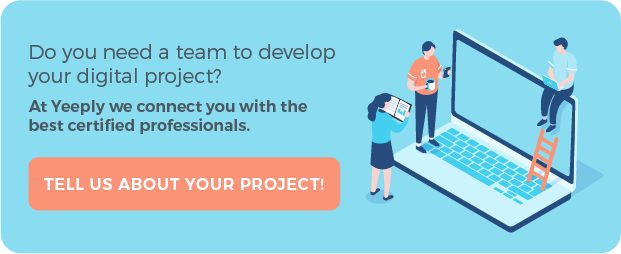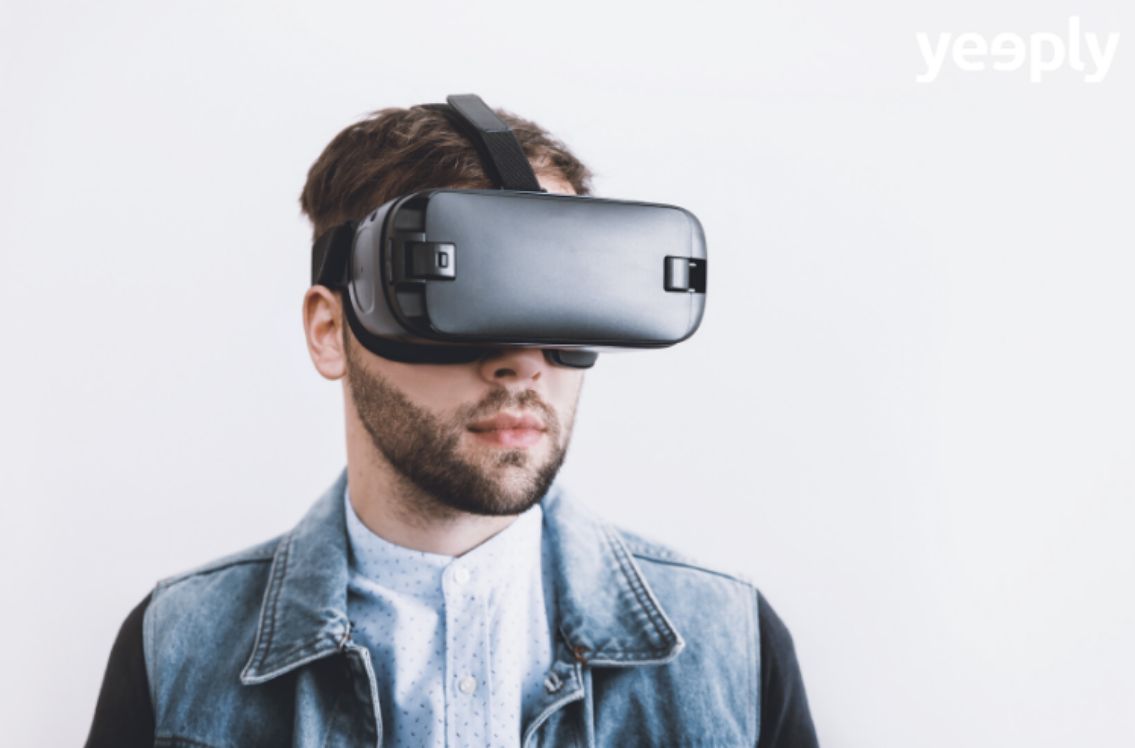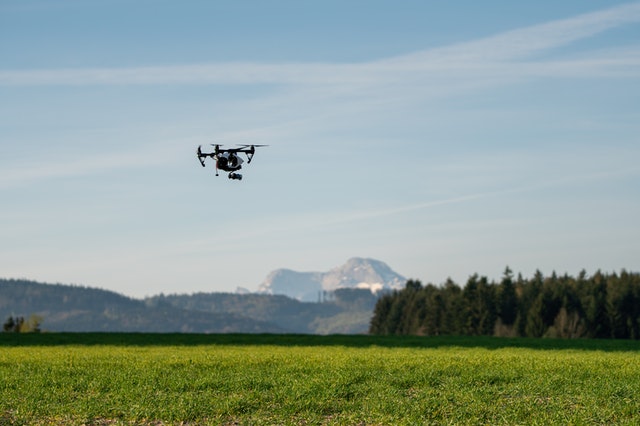Augmented reality (AR) and virtual reality (VR), even though in their early days, have already begun to take the healthcare industry by storm. These immersive technologies are bringing about remarkable changes in the workings of the healthcare sector. Looking at their growing demand and popularity within the niche, experts have predicted that the AR/VR industry is set to reach $5.1 billion by the year 2025.
While augmented reality improves the users’ view of the real world by superimposing the information and rendering 3D elements, with virtual reality, users experience a complete shift in their view.
Medical professionals are already using AR/VR-enabled devices as easily accessible and economical options to diagnose, treat, as well as cure illnesses, among other things.
In this article, we will be looking at a few broad and meaningful applications of AR and VR in the health tech niche.
HealthTech Trend #1: Improved Patient Experience
Patient experience happens to be one of those elusive things that hardly gets broached when pointing out how VR and AR can contribute towards making the healthcare system better. Even so, if one observes closely, patient experience is the one application that gets the most out of the implementation of VR and AR.
Furthermore, AR and VR can help patients gain a better understanding of their health. By taking the patient on a virtual tour of their present medical condition or the exact procedure of surgery about to be performed on them, patients end up trusting their healthcare providers more.
Another way in which this technology can improve overall patient engagement is by controlling the environment to manipulate how a patient feels something or to relieve anxiety. One excellent example of this phenomenon is the Hematology Clinic at Nationwide Children’s Hospital which uses VR to put patients in a calming or entertaining environment while they undergo painful needle pricks and other treatment.
“I work with pediatric patients with bleeding disorders and know all too well the fears and anxiety that they and their families experience related to frequent needle sticks,” said Amy Dunn, MD, director of Hematology at Nationwide Children’s. “I took this problem to our incredible design team and asked them to help our haemophilia team create a solution that would be cost-effective, friendly, safe, engaging for children of any age, and help with adherence to treatments ultimately leading to better outcomes.”
“The feedback we have gotten so far has been really positive,” said Dr Dunn. “As “One Team” we designed an approach that is truly engaging and immersive for kids and is customized to their needs, and we believe it will really make a difference in their treatment and outcomes.”
HealthTech Trend #2: Data Visualization

The most effortless way in which augmented reality solutions can methodically fit into the healthcare system is through data visualization. Case in point – visualized patient data with a possibility of live statistics.
Pertinent patient information is one of the most critical components that enable effective treatment. And yet, even with the most progressive data management systems – the scope of congregated information can be confusing or impenetrable at times for the doctors since it is usually placed on numerous monitors.
Augmented reality can display useful stats directly on the patient’s body – pointing out the problematic areas. While it sounds complicated, the whole thing can fit into a pair of smart glasses and accessed through something as compact and easily available as a smartphone.
Case Western Reserve University and the Cleveland Clinic have partnered with Microsoft and released a mixed reality device called HoloLens. Using the HoloAnatomy app, both students and doctors alike get to visualize the human body in a simple-and-spectacular way. The HoloLens Headset from Microsoft can further help app users see everything right from muscles to the smallest veins on a dynamic holographic model.
Griswold, a world-renowned radiology researcher, explains that he had worked with datasets of brain MRIs for more than a decade, “and I never fully understood their 3-D structure until I saw them in HoloLens.”
A complete recreation of the patient’s body may come in handy and prove to be highly efficacious when the case is complicated or when a doctor isn’t physically available to attend the examination. AR-based apps like the one mentioned above hold the potential to completely revolutionize the way in which data is being consumed in medicine, as healthcare providers would be able to visualize the human body in 3D at one simple touch.
HealthTech Trend #3: Medical Training and Education
One of the greatest challenges that the healthcare system constantly struggles is the scarcity of trained professionals. There is way too much demand, and there is nearly not enough time to prepare medical personnel to solve every issue at hand. The implementation of VR & AR solutions can easily solve this problem by providing competent medical education and subsequent training.
To begin with, healthcare training through means of AR and VR can help students study human anatomy layer by layer and understand the mechanics of the human body far more quickly when compared to the traditional apprentice education model. These upcoming technologies also provide interactivity which supplies more profound insight into the body’s various functions.
Cutting-edge technology is especially critical when it comes to the training stage as it is near-impossible to imitate near-real life conditions to prepare professionals, which is less of an issue with the implementation of VR.
With a little help from sensors and a headset – it is possible to recreate a scenario that will test the trainee’s skills in a much more engaging manner. This makes it possible for the trainee to experience a surgery not as a passive spectator, but in a simulated scenario.
At Stanford University, students are using VR headsets to see inside an infant’s beating heart in order to explore congenital heart defects. Medical students can walk around inside a beating heart, manipulate it and observe how a defect impacts normal functions of the organ.
David M. Axelrod, MD, clinical assistant professor of pediatric cardiology at Stanford University School of Medicine, explains,” The heart is a complicated three-dimensional organ, and it’s really hard to describe what’s going on inside of it — especially when something is going wrong. Virtual reality eliminates a lot of that complexity by letting people go inside the heart and see what’s happening themselves — it’s worth way more than a thousand words.”
AR and VR are already creating ripples in healthcare. Some serious health-related diseases and ailments are successfully being labelled through immersive technology. Time and again these technologies have proved to be time-savers for patients.
It wouldn’t be wrong to say that the future of healthcare is strongly connected to the rapid adoption of augmented reality and virtual reality within it.












